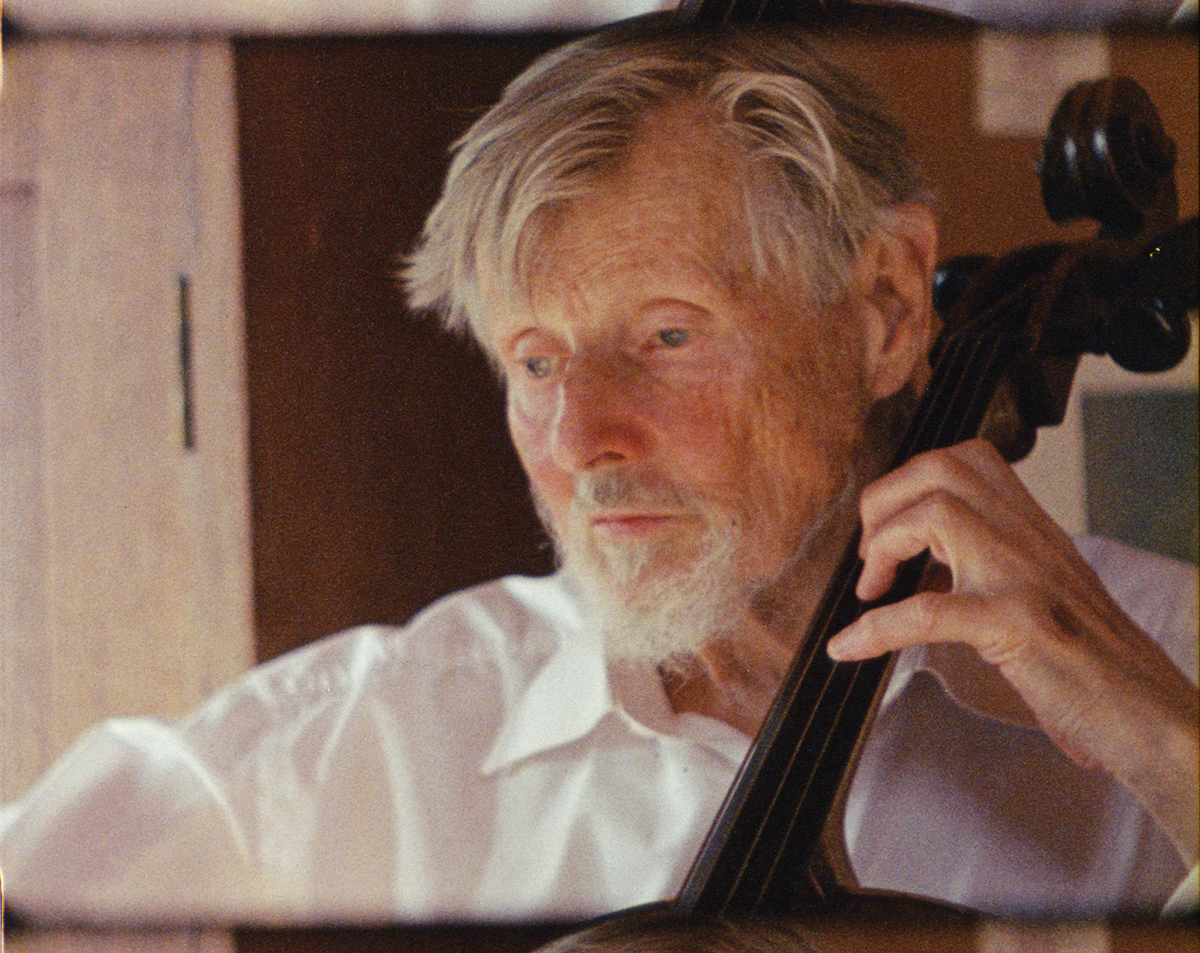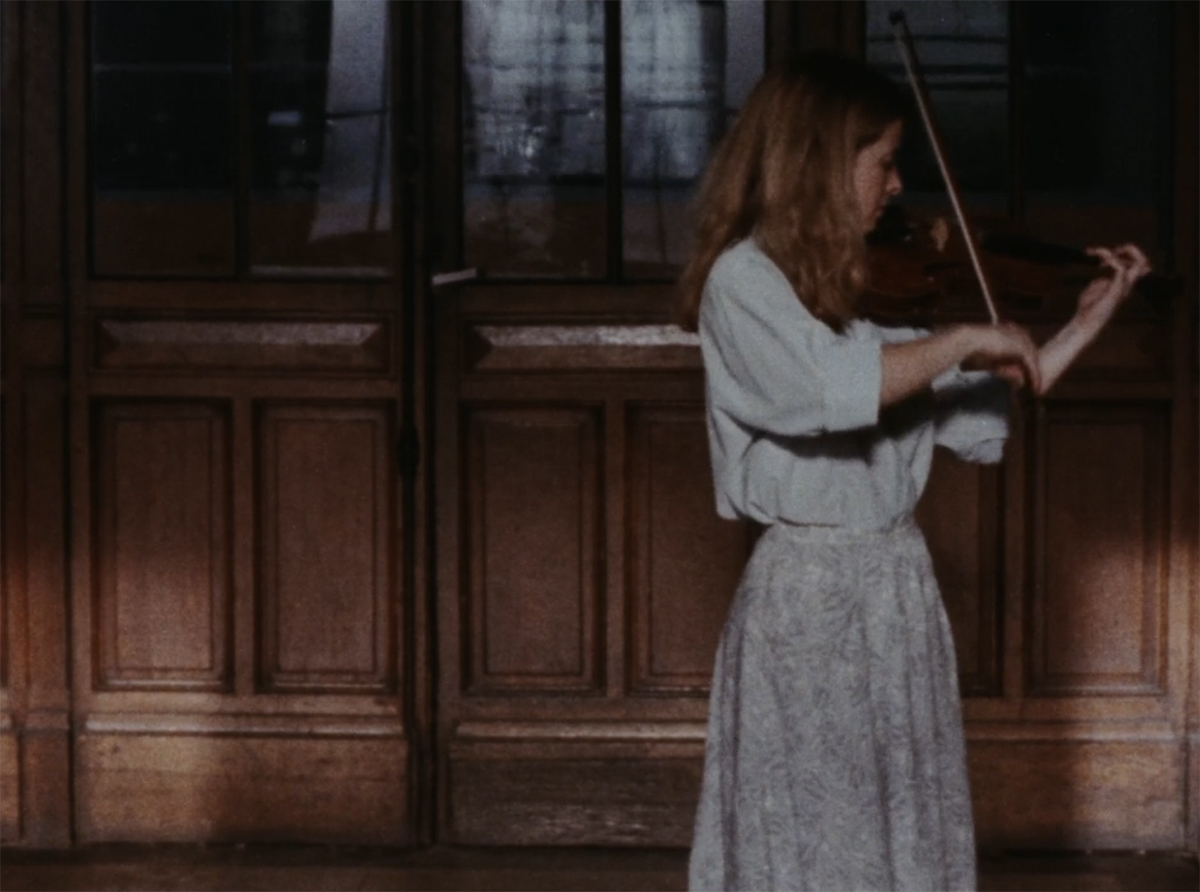Listening to the Space In My Room / Die Reise nach Lyon
Followed by a conversation with Claudia von Alemann
Supported by Goethe-Institut Brüssel
Courtisane is een platform voor film en audiovisuele kunsten. In de vorm van een jaarlijks festival, filmvertoningen, gesprekken en publicaties onderzoeken we de relaties tussen beeld en wereld, esthetiek en politiek, experiment en engagement.
Courtisane is a platform for film and audiovisual arts. Through a yearly festival, film screenings, talks and publications, we research the relations between image and world, aesthetics and politics, experiment and engagement.
COURTISANE FESTIVAL 2026: 1-5 April
Followed by a conversation with Claudia von Alemann
Supported by Goethe-Institut Brüssel

“The life of a sound should inhabit the film frame,” Robert Beavers wrote in one of his numerous notebooks. Of all the astonishing films in his singular body of work, Listening to the Space in My Room is perhaps the film that manifests the life of sounds in the most evocative way. Between 2002 and 2012, Beavers lived on the ground floor of an old house in Zumikon, a quiet Zurich municipality, just underneath his landlords, Cécile and Dieter Staehelin, a retired doctor and a cellist, respectively. This film is a lyrical ode to the Staehelins and to life in this long-shared place, as well as an exploration of resonance as an acoustic signature of a space, connecting sound and space through the element of time. Throughout the film, Beavers articulates zones of permeability — between floors, between garden and interior, between subjectivities. Cello tones and birdsong join the crackle of creaking floorboards and the muffled sounds of footsteps and conversation, extending the meditation on the acoustics of shared inhabited space. “At about midpoint in the film we hear the sound of rain first introduced with black leader and then accompanying a pan as the rain falls on the garden and elephant leaves. This rich and complex sound- scape breathes with life and exudes a quality which opens the soundtrack to the outside — to that which is traditionally outside of music (noise) and to the world beyond the visual space of film.” (Luke Fowler)
“Imagine someone boiling down all the impermanent sensations, routines, memories, and emotions that make a home a home into an intensely flavorful reduction, and you begin to understand Beavers’ stunning film. He and his housemates are crystallized at work: the camera sways with the hands of an older man bowing his cello; observes an older woman tending her garden from inside the darkened house; mirrors Beavers himself examining individual frames of film to stage his somatic cuts. The intricately interlaid tracks of sound and image do not abide any standard measure of continuity, and yet there’s something immediately comprehensible in this exquisitely tuned song of the body in space.” (Max Goldberg)

Elisabeth wanders the sleepy streets of Lyon, following in the footsteps of socialist and feminist writer Flora Tristan. Carrying with her the writer’s diary and a tape recorder, she tries to reconstruct what Tristan might have felt when she walked the same streets, shortly before her death, at 41, in 1844. Filmed before Lyon’s Italianate facelift and its listing as a World Heritage Site, this remarkable exploration of feminist history portrays a working-class city where traces of the past persist, the leprous facades revealing wrinkles that hark back to the Canut revolts of the 19th century and the roundups during the Second World War. But it is not so much the image that marks this film as it is the sound. It is surprisingly present and all the more vivid because it plays on scarcity, somewhat like the image yet in an even more radical way. Everything happens as if the city were an echo chamber, as if each scene were a sounding board for everyday sounds floating between strangeness and familiarity, past and present. The violin, which Elisabeth plays in the final scene as a resolution to her search, makes her grasp the meaning of resonance, which is first of all that of her footsteps in the city. “I could hear the sound of my own footsteps. I moved and my steps echoed through the street. The echo of Flora’s footsteps, a century and a half later: the echo of her passage.” By listening attentively, Elisabeth is able to recognize, in the humblest of sounds, the strongest of resonances: the imprint of the past underneath the echoes resounding in the present.
“In Die Reise nach Lyon, a woman historian, fascinated by the diary kept by Flora Tristan during the last few months of her life, refuses the traditional way of ‘looking’ at history and gets caught up in a complex, multi-layered pattern of reverberations. History and ‘her’ story become a network of resonances. One life/ voice imprints in another. The process of social change, instead of being read by academic detectives in stuffy archives, resound in a space between a sound and its similar echoes. A visually fascinating film which is nevertheless one of the few real sound films ever made.” (Paul Willemen)
2K digital restoration by Deutsche Kinemathek